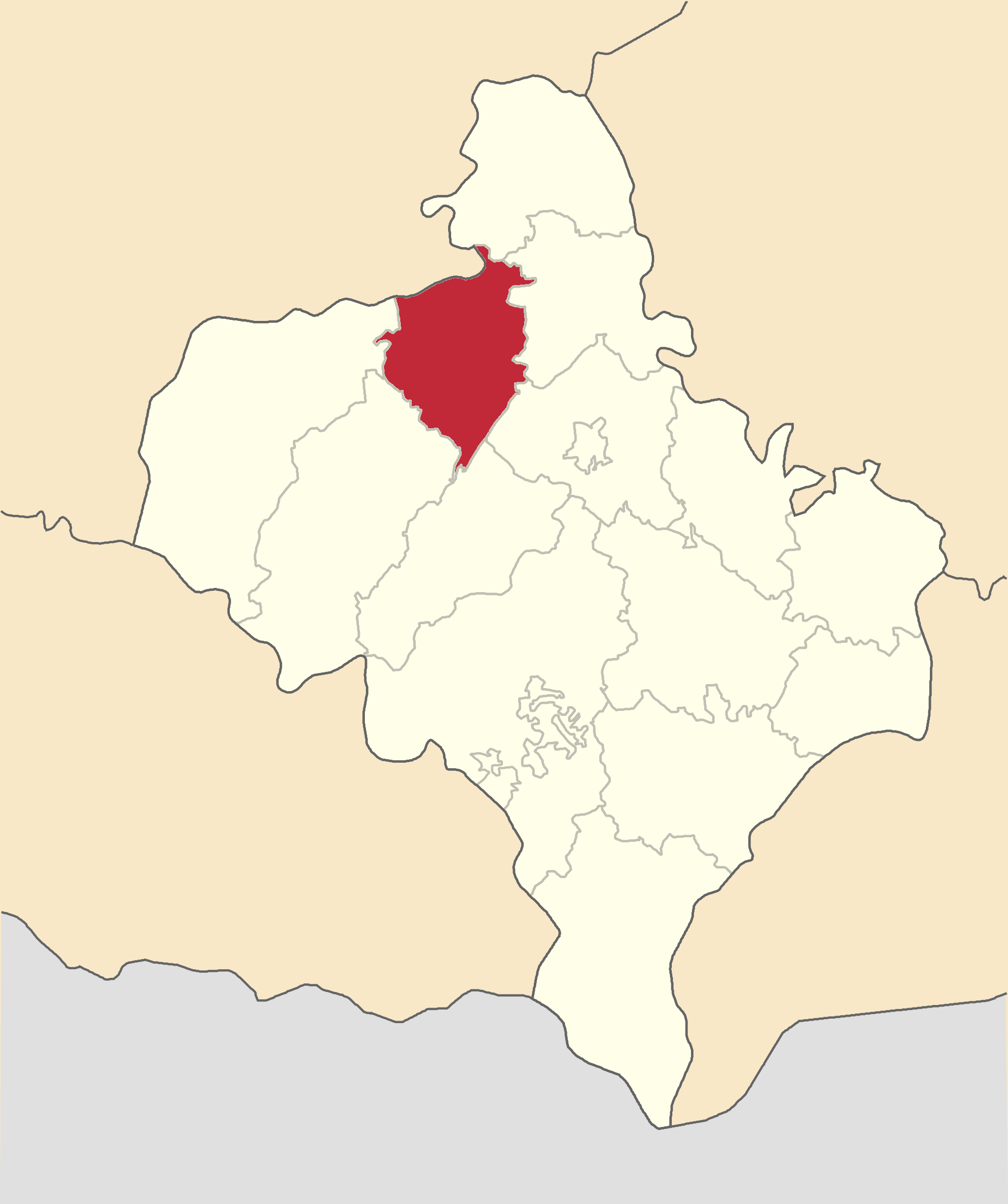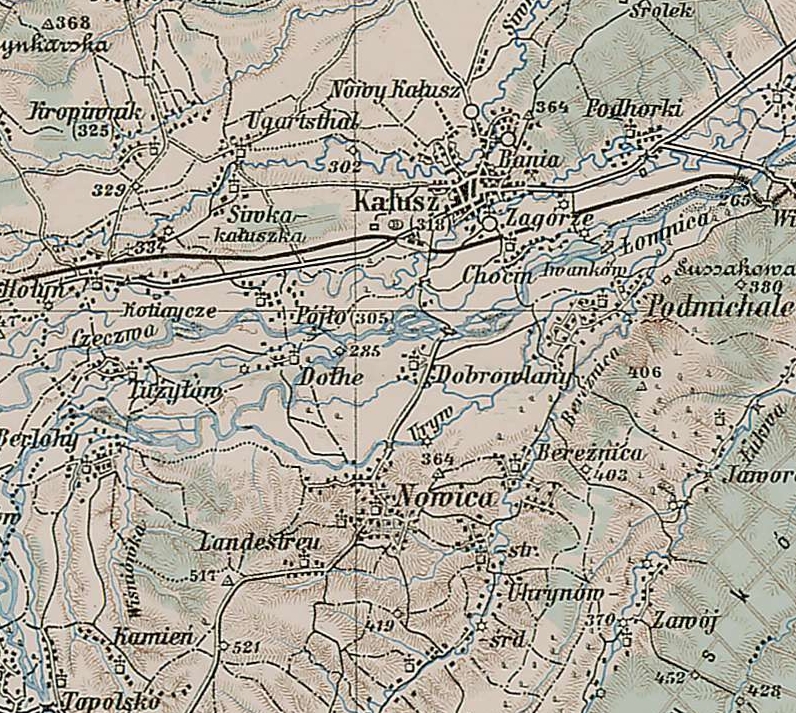|
Tadeusz Rozwadowski
Count Tadeusz Jordan-Rozwadowski (19 May 1866 – 18 October 1928) was a Polish military commander, diplomat, and politician, a general of the Austro-Hungarian Army and then the Polish Army. Biography Youth Jordan-Rozwadowski was born in Babin, near Kałusz, Galicia, which formed part of the Austrian Empire (Austria-Hungary from 1867). The Jordan-Rozwadowski family was a member of the Polish nobility and a part of Traby clan (''see Trąby coat of arms''). The family obtained the title of count from the Habsburg Emperor Joseph II in 1783 in the nobility of the Holy Roman Empire and the Austrian nobility. Tadeusz came from a family with a long military tradition. The 'Jordan' byname is a memento of a distant ancestor who during the Third Crusade was the first Pole to see the Jordan River. General's ancestor, Maciej Rozwadowski, showed bravery at the Battle of Vienna in 1683. Tadeusz's great-grandfather, Kazimierz Jordan-Rozwadowski, was a brigadier general under K ... [...More Info...] [...Related Items...] OR: [Wikipedia] [Google] [Baidu] |
Kalush Raion
Kalush Raion ( uk, Ка́луський райо́н, translit=Kalushsky raion) is a raion (district) of Ivano-Frankivsk Oblast (province). The city of Kalush is the administrative center of the raion. Population: . On 18 July 2020, as part of the administrative reform of Ukraine, the number of raions of Ivano-Frankivsk Oblast was reduced to six, and the area of Kalush Raion was significantly expanded. Two abolished raions, Dolyna and Rozhniativ Raions, as well as Bolekhiv Municipality and the city of Kalush, which was previously incorporated as a city of oblast significance and did not belong to the raion, were merged into Kalush Raion. The January 2020 estimate of the raion population was The raion was formed on October 28, 1963. In 1972 part of the raion became incorporated into the Kalush municipality. The oldest settlements in the Raion are Stankiv (1158), Zaviy (13th century), Holyn' (1391), and Novytsia (14th century). The leader of the Organization of Ukrainian Nati ... [...More Info...] [...Related Items...] OR: [Wikipedia] [Google] [Baidu] |
Holy Roman Empire
The Holy Roman Empire was a Polity, political entity in Western Europe, Western, Central Europe, Central, and Southern Europe that developed during the Early Middle Ages and continued until its Dissolution of the Holy Roman Empire, dissolution in 1806 during the Napoleonic Wars. From the accession of Otto I in 962 until the twelfth century, the Empire was the most powerful monarchy in Europe. Andrew Holt characterizes it as "perhaps the most powerful European state of the Middle Ages". The functioning of government depended on the harmonic cooperation (dubbed ''consensual rulership'' by Bernd Schneidmüller) between monarch and vassals but this harmony was disturbed during the Salian Dynasty, Salian period. The empire reached the apex of territorial expansion and power under the House of Hohenstaufen in the mid-thirteenth century, but overextending led to partial collapse. On 25 December 800, Pope Leo III crowned the List of Frankish kings, Frankish king Charlemagne as Carolingi ... [...More Info...] [...Related Items...] OR: [Wikipedia] [Google] [Baidu] |
Joseph II, Holy Roman Emperor
Joseph II (German: Josef Benedikt Anton Michael Adam; English: ''Joseph Benedict Anthony Michael Adam''; 13 March 1741 – 20 February 1790) was Holy Roman Emperor from August 1765 and sole ruler of the Habsburg lands from November 29, 1780 until his death. He was the eldest son of Empress Maria Theresa and her husband, Emperor Francis I, and the brother of Marie Antoinette, Maria Carolina of Austria and Maria Amalia, Duchess of Parma. He was thus the first ruler in the Austrian dominions of the union of the Houses of Habsburg and Lorraine, styled Habsburg-Lorraine. Joseph was a proponent of enlightened absolutism; however, his commitment to secularizing, liberalizing and modernizing reforms resulted in significant opposition, which resulted in failure to fully implement his programs. Meanwhile, despite making some territorial gains, his reckless foreign policy badly isolated Austria. He has been ranked with Catherine the Great of Russia and Frederick the Great of Prussia ... [...More Info...] [...Related Items...] OR: [Wikipedia] [Google] [Baidu] |
Habsburg Monarchy
The Habsburg monarchy (german: Habsburgermonarchie, ), also known as the Danubian monarchy (german: Donaumonarchie, ), or Habsburg Empire (german: Habsburgerreich, ), was the collection of empires, kingdoms, duchies, counties and other polities that were ruled by the House of Habsburg, especially the dynasty's Austrian branch. The history of the Habsburg monarchy can be traced back to the election of Rudolf I as King of Germany in 1273 and his acquisition of the Duchy of Austria for the Habsburg in 1282. In 1482, Maximilian I acquired the Netherlands through marriage. Both realms passed to his grandson and successor, Charles V, who also inherited the Spanish throne and its colonial possessions, and thus came to rule the Habsburg empire at its greatest territorial extent. The abdication of Charles V in 1556 led to a division within the dynasty between his son Philip II of Spain and his brother Ferdinand I, who had served as his lieutenant and the elected king of Hungary and ... [...More Info...] [...Related Items...] OR: [Wikipedia] [Google] [Baidu] |
Trąby Coat Of Arms
Trąby (, "Horns") is a Polish coat of arms. It was used by many ''szlachta'' (noble) families under the Kingdom of Poland and the Polish–Lithuanian Commonwealth. History The origin of the horn motif lies in the extent of lands conceded being determined by the distance a horn could be heard in all directions. Blazon Argent three bugle horns in triangle the mouthpieces conjoined in fess point Sable garnished, virolled and corded Or. Notable bearers Notable bearers of this coat of arms have included: * Prince Jan Karaszewicz-Tokarzewski (1885–1954) — Ukrainian diplomat and heraldry historian * Kristinas Astikas * Radvila Astikas * Zbigniew Brzeziński * Teodor Narbutt, historian, military engineer * Radziwiłł family * Tadeusz Jordan-Rozwadowski, Austrian & Polish General & Politician, first chief of the modern Polish General Staff 1918-1919 & 1920-1924, major contributor to victory at the Battle of Warsaw, one of the founders of the modern Polish state. * Michał Kara ... [...More Info...] [...Related Items...] OR: [Wikipedia] [Google] [Baidu] |
Szlachta
The ''szlachta'' (Polish: endonym, Lithuanian: šlėkta) were the noble estate of the realm in the Kingdom of Poland, the Grand Duchy of Lithuania, and the Polish–Lithuanian Commonwealth who, as a class, had the dominating position in the state, exercising extensive political rights and power. Szlachta as a class differed significantly from the feudal nobility of Western Europe. The estate was officially abolished in 1921 by the March Constitution."Szlachta. Szlachta w Polsce" ''Encyklopedia PWN'' The origins of the ''szlachta'' are obscure and the subject of several theories. Traditionally, its members owned land (allods), [...More Info...] [...Related Items...] OR: [Wikipedia] [Google] [Baidu] |
Austrian Empire
The Austrian Empire (german: link=no, Kaiserthum Oesterreich, modern spelling , ) was a Central-Eastern European multinational great power from 1804 to 1867, created by proclamation out of the realms of the Habsburgs. During its existence, it was the third most populous monarchy in Europe after the Russian Empire and the United Kingdom. Along with Prussia, it was one of the two major powers of the German Confederation. Geographically, it was the third-largest empire in Europe after the Russian Empire and the First French Empire (). The empire was proclaimed by Francis II, Holy Roman Emperor, Francis II in 1804 in response to Napoleon's declaration of the First French Empire, unifying all Habsburg monarchy, Habsburg possessions under one central government. It remained part of the Holy Roman Empire until the latter's dissolution in 1806. It continued fighting against Napoleon throughout the Napoleonic Wars, except for a period between 1809 and 1813, when Austria was first all ... [...More Info...] [...Related Items...] OR: [Wikipedia] [Google] [Baidu] |
Galicia (Eastern Europe)
Galicia ()"Galicia" ''Collins English Dictionary'' ( uk, Галичина, translit=Halychyna ; pl, Galicja; yi, גאַליציע) is a historical and geographic region spanning what is now southeastern Poland and western Ukraine, long part of the Polish–Lithuanian Commonwealth.See also: It covers much of such historic regions as Red Ruthenia (centered on Lviv) and Lesser Poland (centered on Kraków). The name of the region derives from the medieval city of Halych, and was first mentioned in Hungarian historical chronicles in the year 1206 as ''Galiciæ''. The eastern part of the region was controlled by the medieval Kingdom of Galicia a ... [...More Info...] [...Related Items...] OR: [Wikipedia] [Google] [Baidu] |
Kalush, Ukraine
Kalush ( uk, Ка́луш, ) is a city set in the foothills of the Carpathian Mountains, in Ivano-Frankivsk Oblast (province) of western Ukraine. It is the administrative centre of Kalush Raion (district) and hosts the administration of Kalush urban hromada, one of the hromadas of Ukraine. Its estimated population was Important local industries include chemicals and concrete. Geography Kalush is in the western portion of Ivano-Frankivsk Oblast, in the region of Western Ukraine at the foothills of the Carpathian Mountains. It stands on the Dniester tributary, the Limnytsia River that begins from the slopes of the Carpathians. The city is at the eastern borders of the ethnographical region of Boyko Land. History The earliest known mention of Kalush is the accounting of a village of that name in a chronicle dated May 27, 1437. At that time, together with all Red Ruthenia, the village belonged to the Kingdom of Poland, and was known under its Polish name, Kałusz. Until th ... [...More Info...] [...Related Items...] OR: [Wikipedia] [Google] [Baidu] |
Polish Army
The Land Forces () are the land forces of the Polish Armed Forces. They currently contain some 62,000 active personnel and form many components of the European Union and NATO deployments around the world. Poland's recorded military history stretches back a millennium – since the 10th century (see List of Polish wars and History of the Polish Army). Poland's modern army was formed after Poland regained independence following World War I in 1918. History 1918–1938 When Poland regained independence in 1918, it recreated its military which participated in the Polish–Soviet War of 1919–1921, and in the two smaller conflicts ( Polish–Ukrainian War (1918–1919) and the Polish–Lithuanian War (1920)). Initially, right after the First World War, Poland had five military districts (1918–1921): * Poznań Military District (Poznański Okręg Wojskowy), HQ in Poznań * Kraków Military District (Krakowski Okręg Wojskowy), HQ in Kraków * Łódź Military District (Łódz ... [...More Info...] [...Related Items...] OR: [Wikipedia] [Google] [Baidu] |
SRB Orden Belog Orla BAR
SRB or Srb may refer to: Places * Serbia (ISO 3166-1 alpha-3 country code SRB), a country in Central/Southeastern Europe * Srb, a village in Croatia Organizations * State Research Bureau (organisation), former Ugandan intelligence agency * Single Resolution Board, EU banking authority Science and technology * Storage Resource Broker, a computer data grid management system * Sulfate-reducing bacteria * Sulfur-reducing bacteria * Service Request Block, in IBM operating systems * Solid rocket booster * SRb, a subtype of semiregular variable star * Swedish Red-and-White or ', a breed of cattle Other uses * Sonic's Rendezvous Band, Ann Arbor, Michigan, US * Daniel Srb (born 1964), Croatian politician * Sora language Sora is a south Munda language of the Austroasiatic language of the Sora people, an ethnic group of eastern India, mainly in the states of Odisha and Andhra Pradesh. Sora contains very little formal literature but has an abundance of folk tales ... (ISO 639-3 cod ... [...More Info...] [...Related Items...] OR: [Wikipedia] [Google] [Baidu] |
.png)



